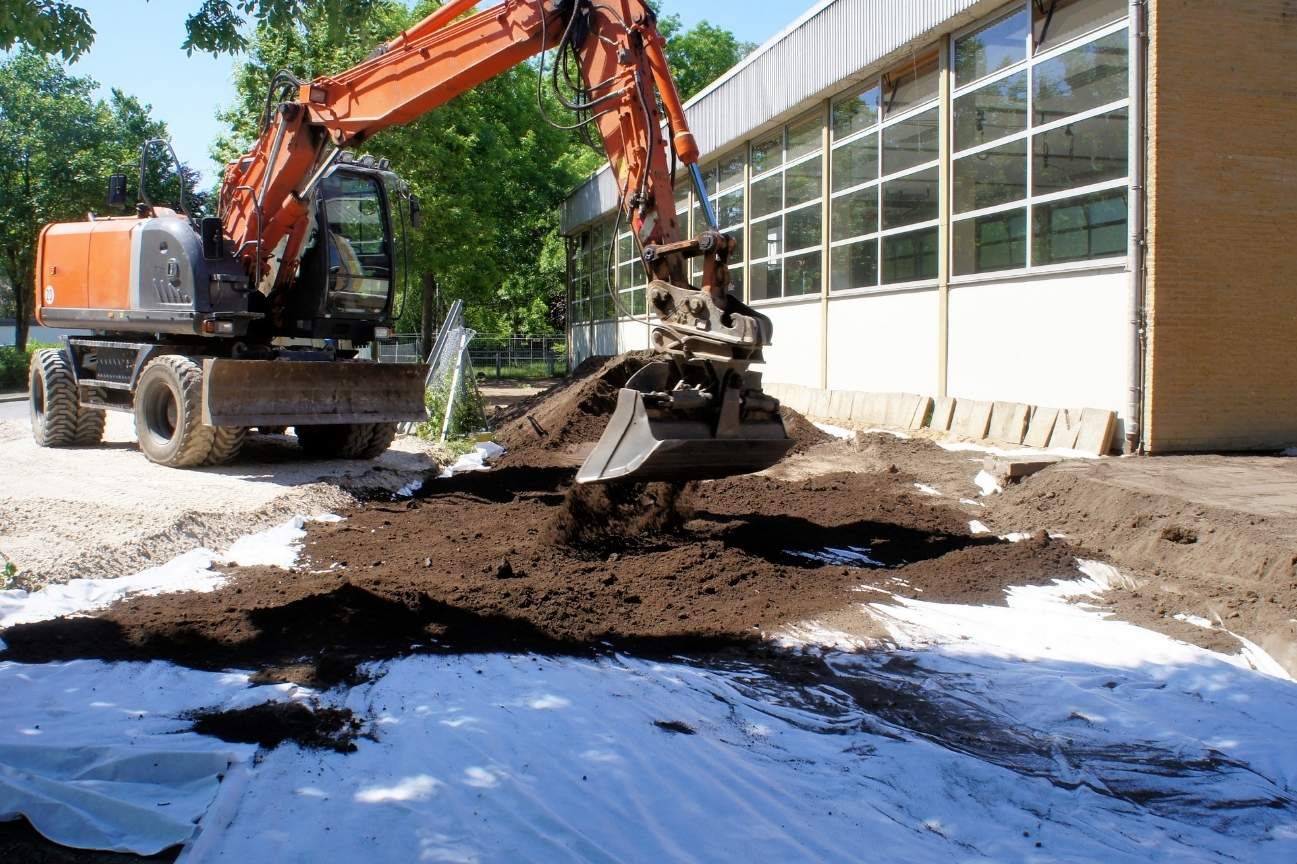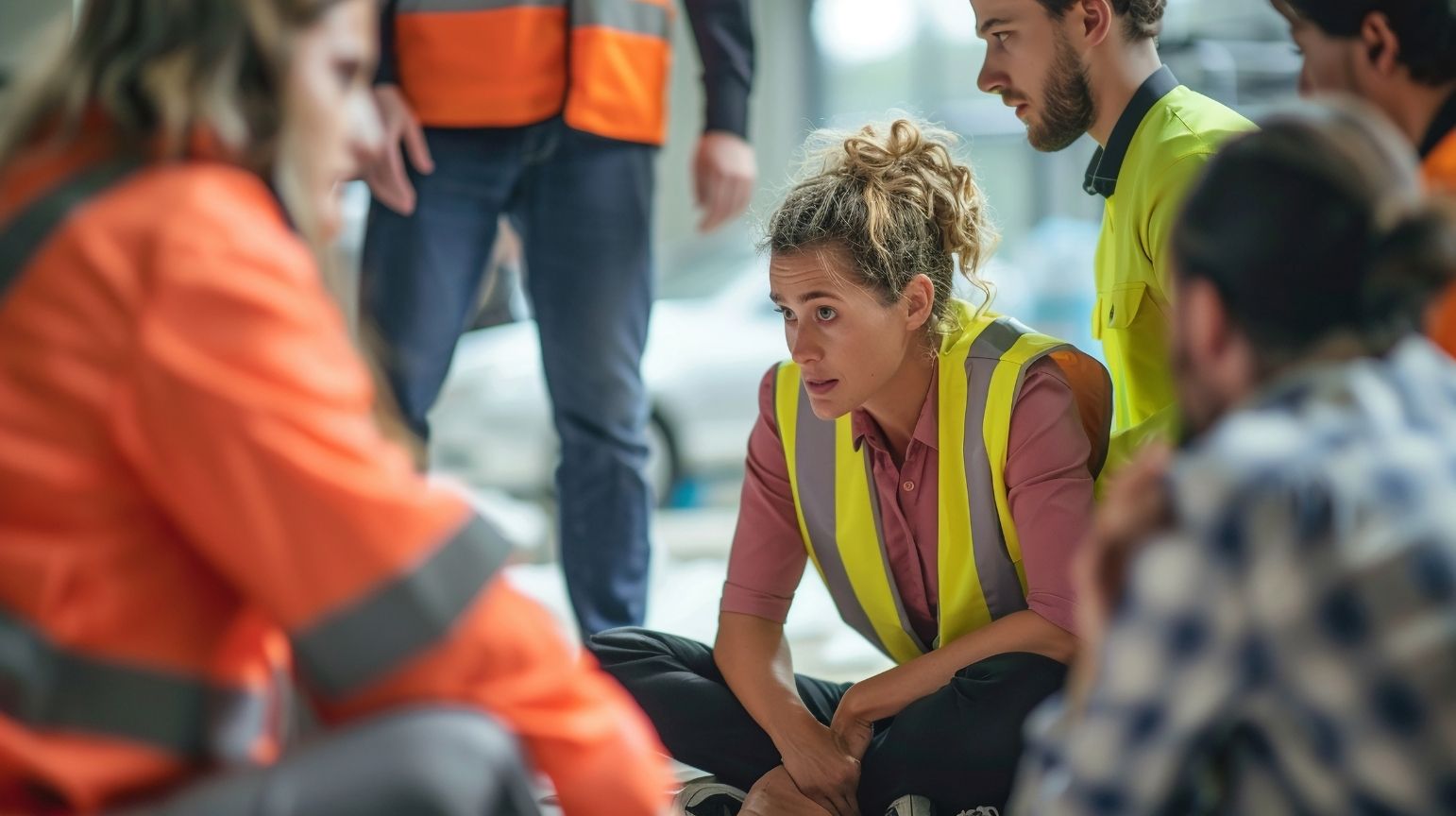Navigating the complexities of contaminated soil hauling can be daunting, but with the right strategies in place, you can ensure that the process is efficient and compliant. Whether you’re a seasoned professional or new to soil management, these seven proven tips will guide you through effective contaminated soil hauling, ensuring safety, compliance, and environmental integrity.
Introduction
Contaminated soil poses significant environmental challenges. It often contains harmful substances that can affect human health and ecosystems. When soil becomes contaminated, it’s crucial to address the problem promptly and efficiently. This is where effective contaminated soil hauling comes into play.
Successful hauling ensures that hazardous materials are transported safely and responsibly to treatment facilities. Compliance with local regulations is essential, as improper handling can lead to legal repercussions, environmental damage, and safety risks.
In this article, you’ll discover seven proven tips to improve your contaminated soil hauling process. From assessing site conditions to developing a comprehensive hauling plan, each tip is designed to enhance safety, ensure compliance, and protect the environment. Let’s dive into these key strategies for effective contaminated soil management.
1. Assess Site and Soil Condition
Before starting the hauling process, conducting a thorough site assessment is crucial. Take the following steps to ensure you’re fully prepared:
Identify the Location
First, identify the exact spot where the contaminated soil is situated. This step allows you to gather essential details about the site conditions and potential hazards.
Test Soil for Contamination
Next, focus on testing the soil for contamination levels. Here are some effective methods:
- Soil Sampling: Collect samples from various locations.
- Laboratory Analysis: Submit samples for detailed examinations.
By quantifying contaminants, you can develop a more informed hauling strategy. This data also aids in determining appropriate disposal methods later on.
Understand Local Regulations
Don’t overlook local regulations and requirements. Each area has specific laws governing contaminated soil handling. Here’s what to keep in mind:
- Familiarize yourself with relevant laws to avoid hefty fines or legal issues.
- Some regions may require special permits or documentation for hauling activities.
Understanding these regulations will keep your project compliant and on track.
Implement Safety Measures
Finally, consider safety measures during your assessment. Ensure that all personnel:
- Wear proper protective gear.
- Use signage to warn about potential hazards in the area.
Your immediate goal is to protect your team while gathering critical site information.
2. Choose the Right Equipment
Selecting the correct equipment is vital for successful contaminated soil hauling. Using the right tools enhances efficiency and ensures safety and compliance with regulations.
Essential Hauling Equipment
To start, you’ll need specialized containers designed specifically for handling contaminated materials. Here are key features to look for:
- Leak-proof: Prevent spillage during transport,
- Sturdy construction: Withstand heavy loads.
Additionally, consider using vacuum trucks. These vehicles efficiently remove contaminated soil while minimizing disturbance to the surroundings.
When selecting vehicles, opt for trucks built for hazardous waste, which often include features such as:
- Leak prevention systems: Ensure safe transportation,
- Compliance with local standards: Meet regulations for carrying contaminated materials.
Importance of Specialized Equipment
Using specialized equipment plays a crucial role in mitigating risks associated with contaminated soil. Here’s why it matters:
- Reduces unsafe conditions: General-purpose tools may lead to compliance issues.
- Safety over cost: Prioritize investing in equipment that complies with regulations.
Investing in high-quality gear can save you money in the long run. Reliable equipment minimizes the chances of accidents and reduces downtime caused by mechanical failures.
Maintenance Tips for Safety and Compliance
Regular maintenance of your hauling equipment is essential. Consider these routine practices:
- Schedule inspections: Regularly check for wear and tear,
- Inspect seals and safety mechanisms: Ensure everything functions correctly.
This proactive approach fosters compliance and a safe working environment.
Furthermore, training your staff on the proper use and maintenance of the hauling equipment is paramount. Effective training can:
- Minimize accidents,
- Extend the lifespan of your tools.
When your team understands the importance of equipment care, they’re more likely to handle it responsibly.
By choosing the right equipment and maintaining it diligently, you establish a foundation for a compliant and efficient contaminated soil hauling operation. Make informed choices to protect both your team and the environment.
3. Develop a Comprehensive Hauling Plan
Creating a comprehensive hauling plan is crucial for successful contaminated soil transport. A well-structured plan enhances efficiency and reduces risks. Here’s how to develop one that meets safety and compliance standards.
Logistics: Routes, Timing, and Manpower
Start by mapping out the best routes for hauling. Traffic conditions, road types, and proximity to disposal sites all play a role. Consider peak traffic hours to avoid delays. Opt for routes that minimize travel time while keeping safety a priority.
Next, determine the timing for your hauling operations. Schedule pickups during off-peak hours to limit disruption. Also, ensure that you have enough manpower for each haul. Proper staffing ensures that each team member knows their role, reducing the chance of errors.
Safety Protocols: Handling and Transportation
Safety is non-negotiable in contaminated soil hauling. Establish clear procedures for loading and transporting the soil. Workers should wear personal protective equipment (PPE) appropriate for handling hazardous materials.
Additionally, train your team on emergency response techniques. In case of an accident, they should know how to act quickly and efficiently. This training not only helps in crisis situations but also reinforces a culture of safety on the job.
Compliance Checks: Adhering to Local Policies and Regulations
Compliance with regulations is vital in contaminated soil hauling. Research and understand local laws concerning hazardous waste transport. This includes understanding labeling, documentation, and reporting requirements.
Regular audits and checks can help maintain compliance. Schedule periodic reviews of your hauling plan to align with any regulatory changes. Staying informed prevents penalties and ensures the safety of your project.
Implementing Waste Hauling Best Practices
When it comes to contaminated soil hauling, implementing best practices is crucial. These strategies help ensure that material is handled safely and responsibly. Below are some essential approaches to enhance your waste handling processes.
Follow Industry Standards
Start by familiarizing yourself with the industry standards for waste handling. Here are some important points to consider:
- Guidelines and Regulations: Organizations often provide guidelines for proper containment and disposal.
- Minimize Risks: Adhering to these standards protects both the environment and public health.
- Stay Updated: Regularly review the latest regulations to maintain compliance.
Segregate Contaminated Materials
Not all soil is the same. Efficiently segregating contaminated materials from non-contaminated ones is vital. Consider the following methods:
- Designated Areas: Use specific areas for each category of soil during sorting.
- Reduce Cross-Contamination: This practice simplifies disposal procedures and reduces risks.
- Color-Coding: Implement color-coded containers or clear labeling to prevent mix-ups.
Maintain Documentation
Throughout the hauling process, proper documentation is essential. Here’s why:
- Record-Keeping: Keep meticulous records of all contaminants, handling procedures, and disposal methods.
- Transparency: Documentation provides transparency and serves as a reference for regulatory checks.
- Tracking Movements: Ensure you have a robust system to track all movements and changes; digital logs can simplify this task.
Train Your Team
A well-informed team is your first line of defense. Provide thorough training on best practices for handling contaminated soil. Focus on:
- Segregation Techniques: Ensure your team understands how to effectively sort materials.
- Safety Protocols: Training should cover the importance of safety during handling.
- Documentation Importance: Emphasize how crucial accurate record-keeping is for compliance.
Regular refreshers will keep your team’s knowledge up-to-date, reinforcing the critical nature of these practices.
5. Train Your Team Effectively
Training your team is crucial for safe and compliant contaminated soil hauling. Properly trained staff can significantly reduce risks associated with handling hazardous materials. Here are some key points to consider when it comes to team training.
Why Training Matters
Understanding the potential hazards of contaminated soil is essential. Staff must recognize the dangers. This awareness helps prevent accidents and injuries on-site. Beyond safety, proper training ensures compliance with local regulations. Failing to meet these regulations can lead to hefty fines or project delays.
Recommendations for Ongoing Education
Regular training sessions improve team knowledge about safety protocols and practices. Consider scheduling sessions that keep your team updated on:
- New regulations
- Advanced handling techniques
- Emergency response procedures
Utilizing workshops or online courses can help deliver this information effectively. Continuous education fosters a culture of safety and awareness among employees.
Clear Communication is Key
Effective communication within your team enhances performance and safety. Make sure team members feel comfortable discussing safety concerns. Hold regular meetings to review protocols and share experiences from recent projects. This practice promotes a cohesive work environment where everyone is on the same page.
Role-Playing Scenarios
Incorporating role-playing into training can be beneficial. It allows team members to practice real-life scenarios in a controlled environment. This method helps workers prepare for emergencies, ensuring they can respond effectively when necessary.
Remember, a well-trained team is your first line of defense against potential hazards in contaminated soil hauling. Invest in their training, and you’ll cultivate a knowledgeable workforce ready to tackle challenges confidently.
6. Utilize Contaminated Waste Solutions
When dealing with contaminated soil, choosing the right treatment and disposal methods is vital. Implementing effective contaminated waste solutions can minimize environmental impact and ensure compliance. Let’s explore the best practices in this area.
Treatment Options for Contaminated Soil
There are several effective treatment options for managing contaminated soil. Here are a few to consider:
Bioremediation: This method involves using microorganisms to break down contaminants in the soil. It’s an eco-friendly option that can effectively reduce harmful substances.
Thermal Treatment: Heat is applied to the contaminated soil to destroy pollutants. This method is particularly useful for organic contaminants.
Chemical Treatment: Chemical agents may neutralize contaminants, making this approach suitable for specific situations. However, it’s essential to handle chemicals carefully to avoid further pollution.
- Landfilling: In some cases, transporting the contaminated soil to a licensed landfill is the most feasible option. Ensure the facility follows all regulations.
These treatment methods depend on the type and level of contamination. Conduct thorough assessments to determine the best solution.
Partnering with Waste Management Companies
Collaborating with specialized waste management companies can simplify the process. These experts bring valuable experience and resources. They can offer:
Compliance Expertise: They ensure all activities align with local regulations. This reduces your burden and the risk of penalties.
Advanced Technologies: Many of these companies utilize cutting-edge technology for soil treatment and disposal. This can expedite the cleanup process while enhancing safety.
Resource Efficiency: Partnering with professionals can lead to cost savings. They can simplify logistics and improve resource management, which is critical in contaminated soil hauling.
Emerging Technologies in Soil Remediation
Technology continues to evolve, providing innovative solutions for soil contamination. Some notable advancements include:
Nanotechnology: Researchers are exploring nanoparticles to target and remove specific contaminants efficiently.
Phytoremediation: This technique uses plants to absorb or degrade pollutants in the soil. It’s a natural approach with increasing popularity.
In-situ treatment: Techniques that treat soil without excavation are gaining traction. This reduces physical disturbance and can be more cost-effective.
Integrating new technologies into your waste management strategy can improve both efficiency and effectiveness.
7 Proven Tips for Successful Contaminated Soil Hauling
Evaluate and Report Post-Haul
After completing the contaminated soil hauling process, evaluation is crucial. It helps you understand what worked and what didn’t. Start with a thorough assessment of the entire project. Look at efficiency, compliance, and the overall effectiveness of the hauling operations.
Conduct Post-Haul Assessments
Begin by reviewing the hauling plan. Did you execute it as designed? Evaluate factors like timing, route efficiency, and manpower allocation. Document any unexpected challenges that arose during the haul. This record provides valuable insights for future projects.
Ensure Compliance Documentation
Maintaining compliance records is not just good practice; it’s a requirement. Record essential details such as the type and quantity of contaminated soil hauled. Keep documentation related to disposal facilities used. Ensure these facilities meet local regulations and environmental standards. This step protects you and demonstrates due diligence.
Identify Improvement Opportunities
Once you complete your documentation, analyze the data for patterns. Were there delays? Did certain equipment underperform? Gathering feedback from your team can also highlight areas for improvement. Use this information to refine your processes and make necessary adjustments for future projects.
Engage with Environmental Regulations
Stay informed about relevant environmental regulations. After your project, review how well your team adhered to guidelines. Assess whether additional training or resources are needed to enhance compliance. Keeping your team educated on the latest regulations is vital as it changes frequently.
Conclusion
In summary, effective contaminated soil hauling requires careful planning and execution. The tips outlined in this article provide a roadmap for success. Start by assessing the site and soil condition thoroughly. Select the right equipment to ensure safety and compliance. Develop a comprehensive hauling plan that covers logistics, safety protocols, and compliance checks.
Don’t forget to implement best practices for waste handling and train your team effectively. Utilize specialized contaminated waste solutions, as they can greatly enhance your soil management efforts. Finally, always evaluate and report after hauling to document successes and areas for improvement.
By adopting these seven strategies, you position yourself for success in contaminated soil hauling. Remember, environmental responsibility and adherence to regulations are crucial in this field. Incorporating these tips not only enhances efficiency but also supports sustainable practices.
For those looking to dive deeper, consider exploring additional resources on soil management and waste solutions. Continued education in this evolving industry is essential. Happy hauling, and may your projects remain compliant and safe!







